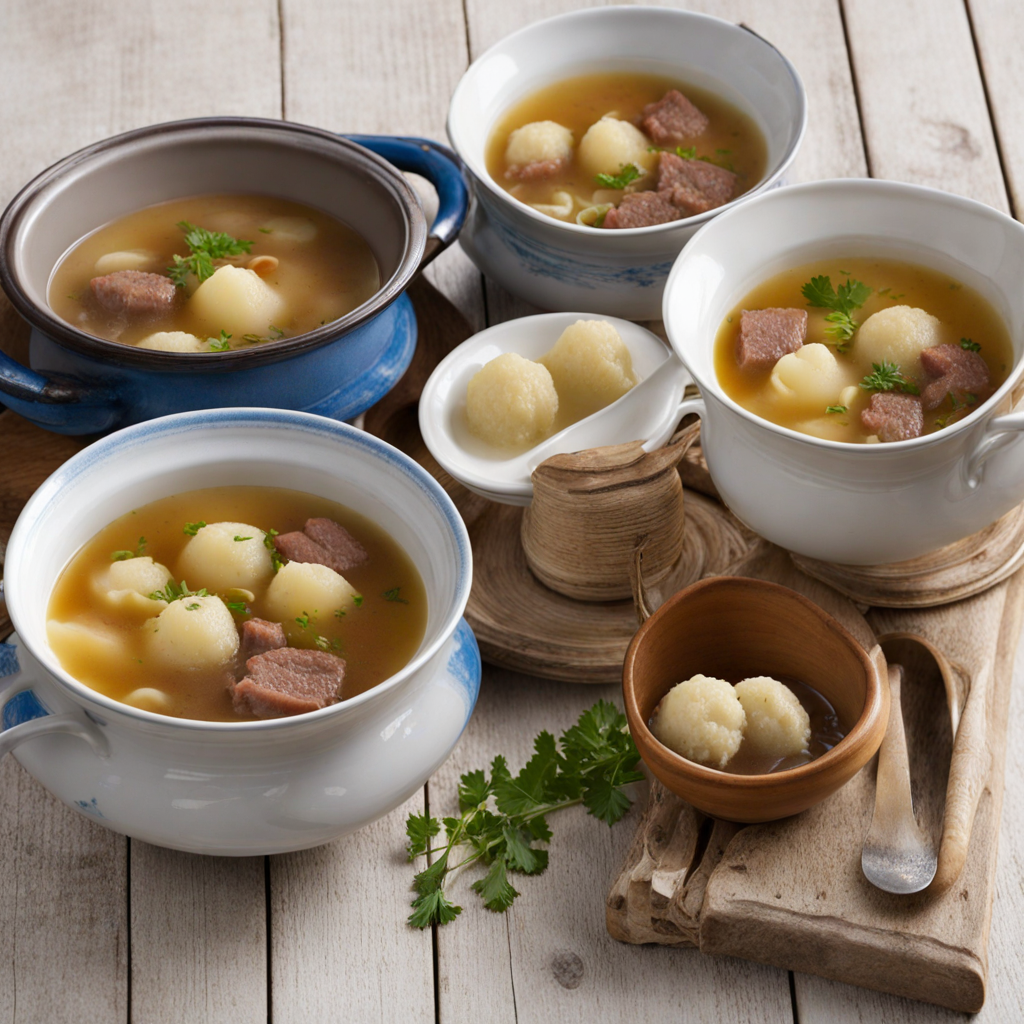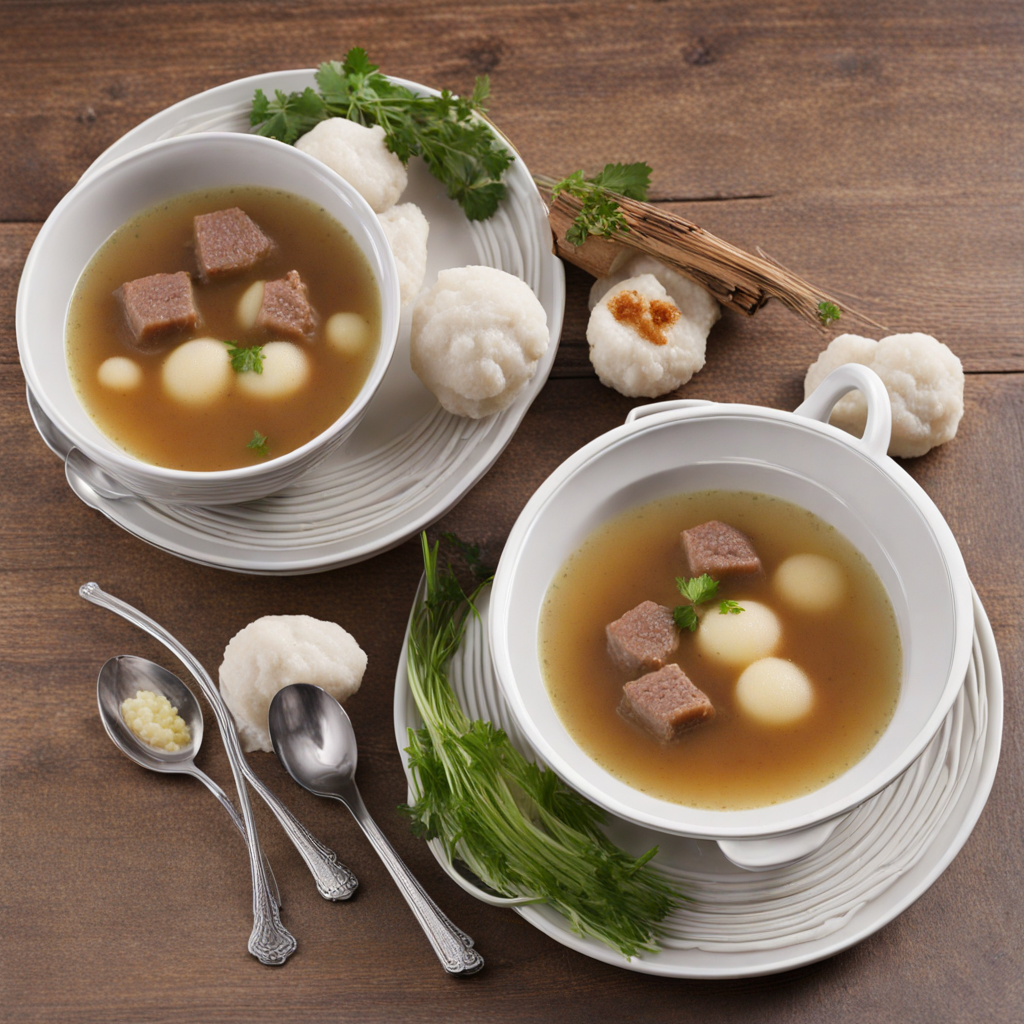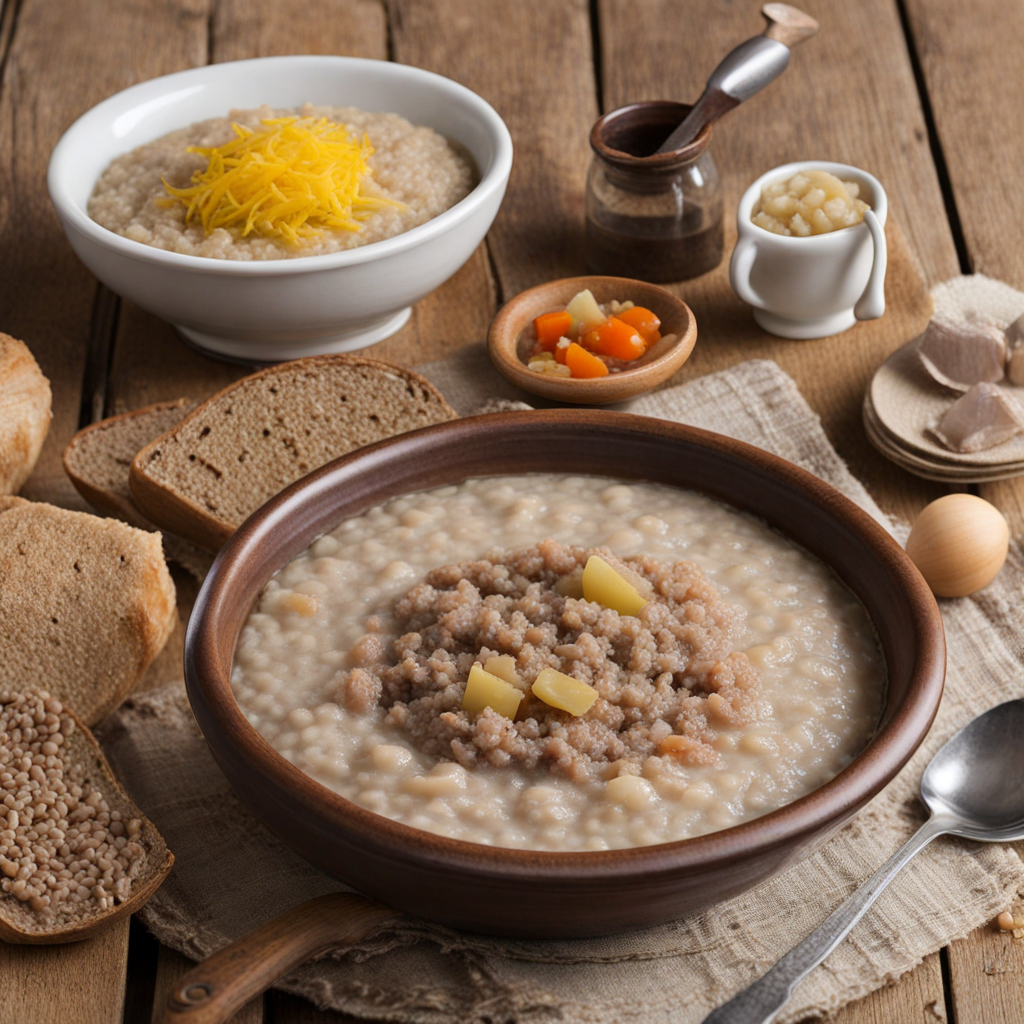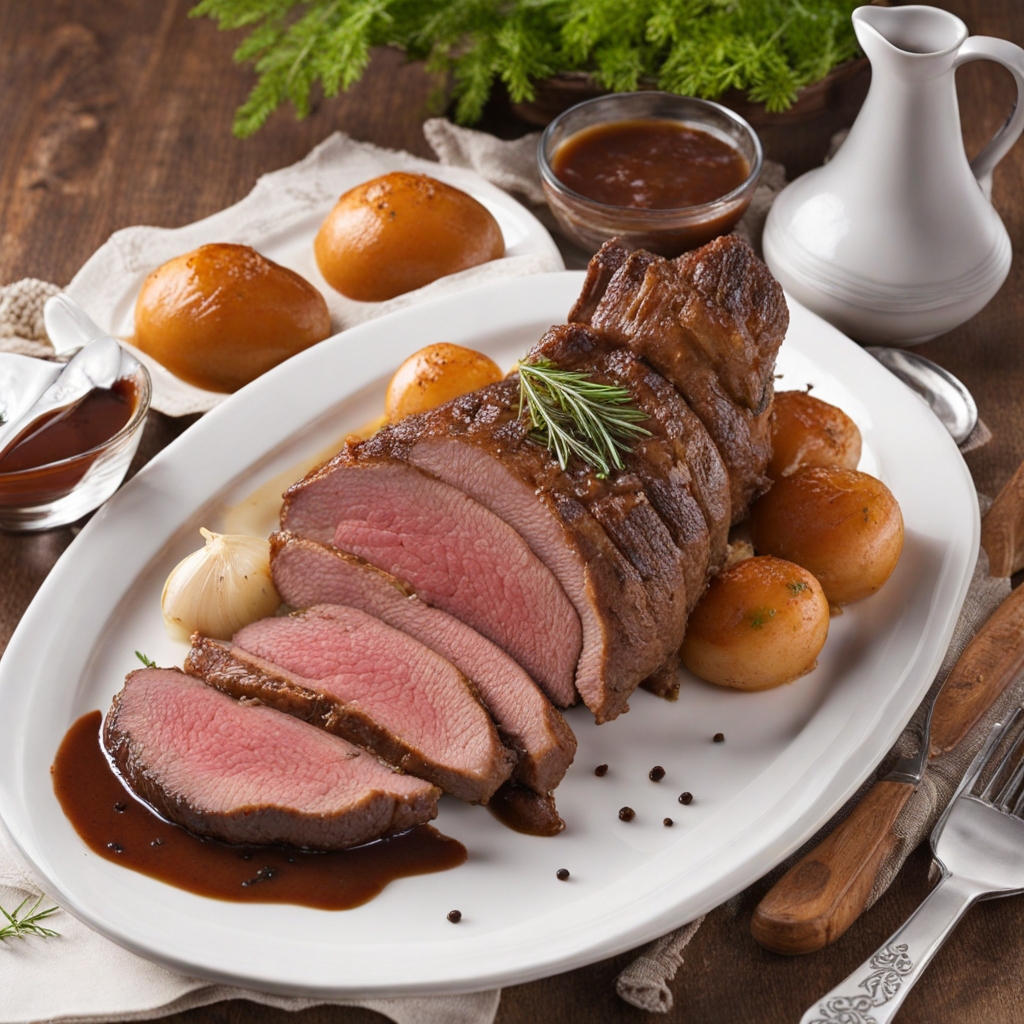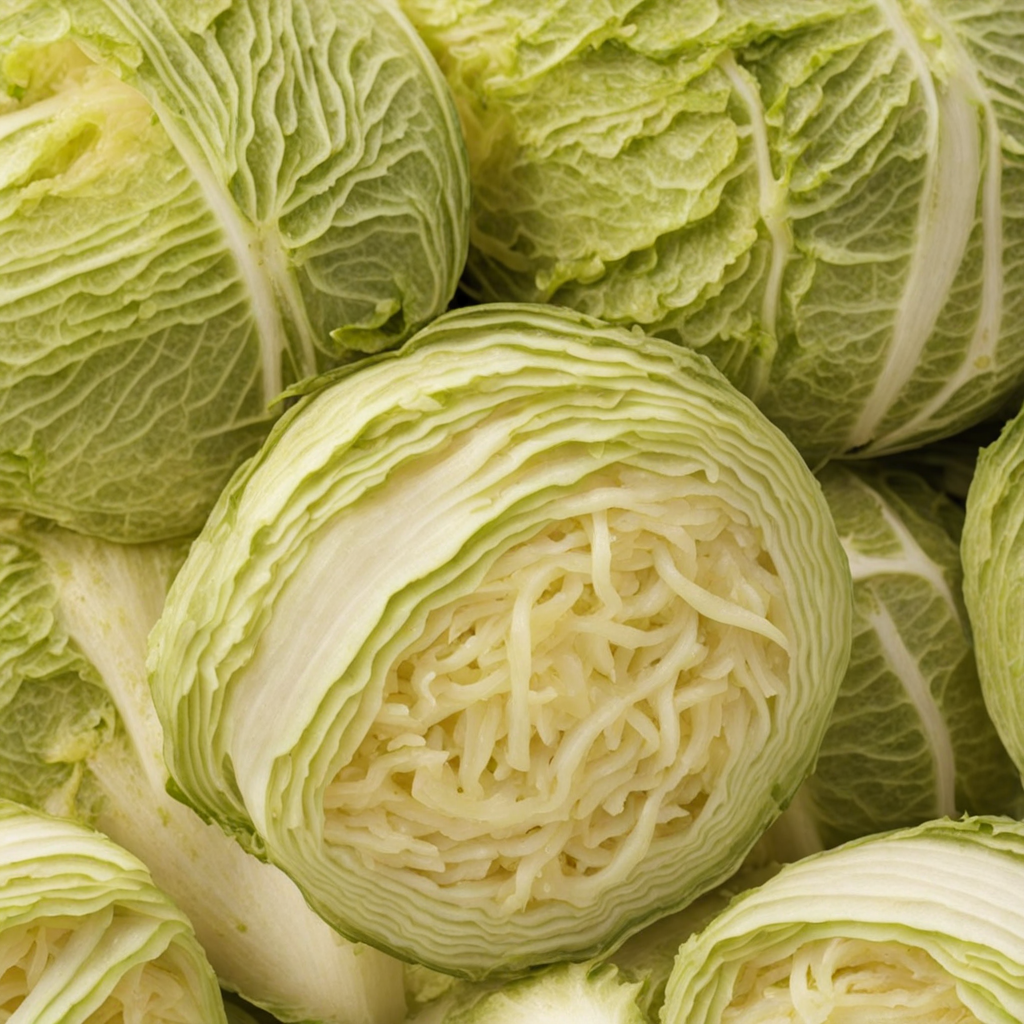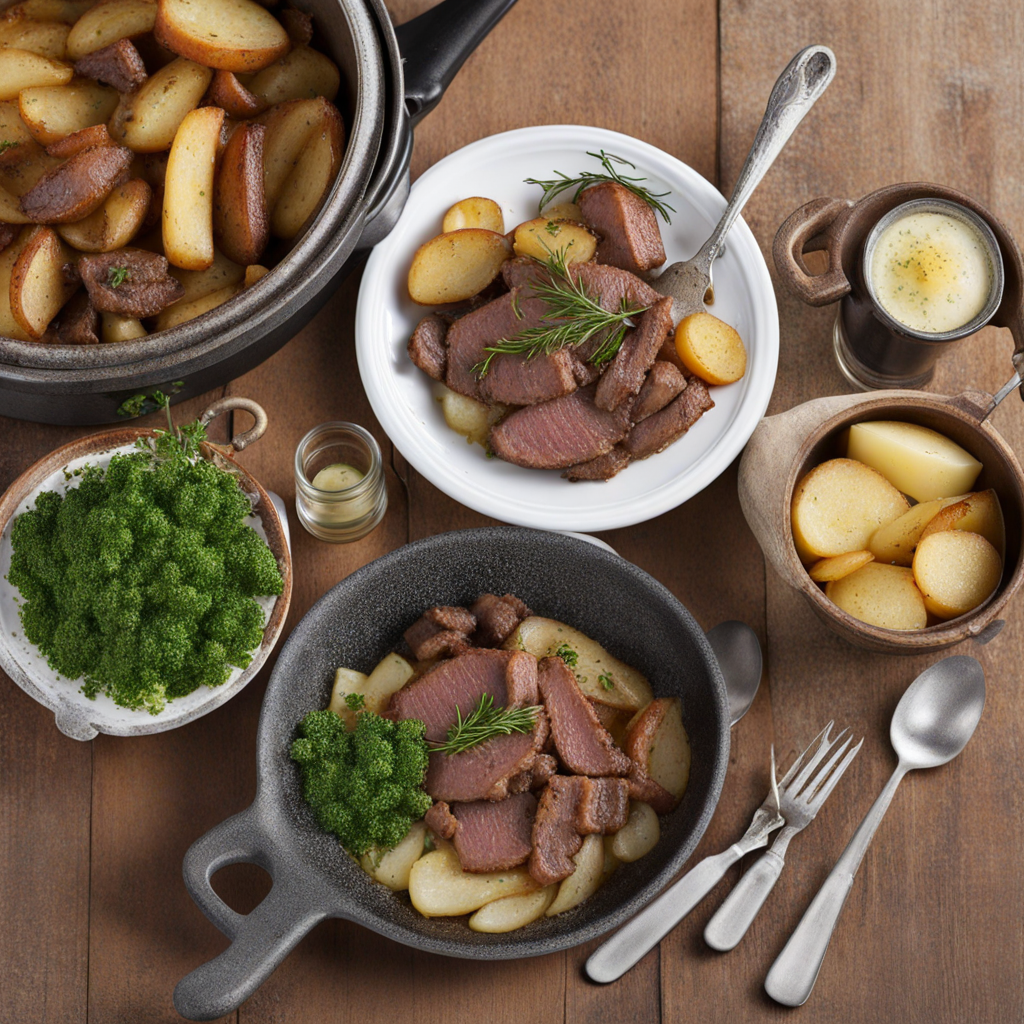Rindsuppe
Rindsuppe, a traditional Austrian beef broth, epitomizes the heartwarming essence of comfort food. This rich and flavorful soup is typically made by simmering beef bones, often with a mix of meat, vegetables, and herbs for an extended period. The slow-cooking process extracts the deep, complex flavors from the ingredients, resulting in a clear, golden broth that is both nourishing and aromatic. The use of fresh ingredients, such as carrots, celery, and onions, adds a subtle sweetness and depth, while herbs like parsley enhance its freshness. What sets Rindsuppe apart is its versatility; it can be enjoyed in various ways. Often served as a first course, the clear broth is ladled into bowls, sometimes accompanied by tiny dumplings or noodles that add a delightful texture. In some regions, you may also find it garnished with finely chopped chives or a sprinkle of fresh parsley, elevating the presentation and flavor profile. The simplicity of Rindsuppe allows the quality of the ingredients to shine, making it a beloved staple in Austrian households. This soup is not just about flavor; it embodies the warmth of Austrian hospitality. Traditionally enjoyed during family gatherings or festive occasions, Rindsuppe brings people together around the table, fostering a sense of community and comfort. Its warming properties make it especially popular during the colder months, providing both sustenance and a soothing experience. Discovering Rindsuppe is like taking a journey into Austria's culinary traditions, where each bowl tells a story of heritage and home.
How It Became This Dish
Rindsuppe: A Culinary Journey Through Austria's Heritage #### Origins of Rindsuppe Rindsuppe, a traditional Austrian beef broth, has its roots deep in the heart of Central European culinary traditions. The name “Rindsuppe” translates directly to “beef soup,” and its origins can be traced back to the rural communities of Austria, where resourcefulness and simplicity dictated the cooking practices of the time. Beef, being a staple protein in many Austrian households, became the foundation of this hearty dish. Historically, the practice of making broth from meat is ancient, with evidence of similar preparations found in various cultures around the world. However, in the context of Austria, Rindsuppe emerged as a staple in the kitchens of both peasants and nobility. The preparation of a rich, clear broth allowed families to make the most of their resources, utilizing every part of the animal, especially during the harsh winter months when fresh ingredients were scarce. #### Cultural Significance Rindsuppe is more than just a dish; it embodies the Austrian ethos of community and sustenance. Traditionally, it was served during family gatherings, holidays, and special occasions, symbolizing warmth and togetherness. Its role in Austrian culture can be likened to that of chicken soup in other cultures, often associated with comfort, healing, and nostalgia. In Austrian households, Rindsuppe is often the first course of a meal, marking the beginning of a communal dining experience. It is frequently accompanied by traditional garnishes such as noodles, dumplings, or fresh herbs, enhancing its flavor and texture. The soup serves as a bridge between generations, with recipes passed down through families, often with slight variations and personal touches that reflect the cook’s heritage. #### Development Over Time As Austria evolved through the centuries, so did Rindsuppe. The dish has seen various adaptations and enhancements, influenced by agricultural practices, regional ingredients, and culinary trends. During the Habsburg Empire, which spanned much of Central Europe, the kitchens of the nobility began to incorporate more sophisticated techniques and flavors. Rindsuppe, while remaining a humble dish, began to feature a wider array of ingredients, including seasonal vegetables and aromatic herbs. In the 19th century, with the rise of the bourgeois class and the establishment of public dining spaces, Rindsuppe became a staple in restaurants. Chefs began to refine the broth-making process, focusing on achieving a crystal-clear soup that was visually appealing and flavorful. This period also saw the introduction of more elaborate garnishes, such as julienned vegetables and liver dumplings, which elevated the dish’s status from simple comfort food to a culinary delight. The 20th century brought about significant changes in Austria’s culinary landscape, especially in the wake of the World Wars. Rindsuppe remained a source of nourishment and comfort during difficult times, often being served in hospitals and care facilities. The post-war period saw a revival of traditional recipes, as people sought to reconnect with their cultural roots. Rindsuppe was embraced not only as a means of sustenance but also as a representation of resilience and continuity in Austrian culture. #### Ingredients and Preparation At its core, Rindsuppe is a simple yet profound dish that requires few ingredients, yet demands attention to detail in preparation. The primary ingredient is beef, traditionally from the shank or bone, which imparts a rich flavor to the broth. The addition of root vegetables such as carrots, parsnips, and celery, along with herbs like parsley and bay leaves, enhances the soup’s complexity. The preparation begins with simmering the beef and bones in water, a process that can last several hours to extract maximum flavor and nutrients. The key to a successful Rindsuppe lies in the slow cooking method that allows the flavors to meld and the fat to rise to the surface, which is skimmed off to achieve clarity. The result is a golden, translucent broth that is both nourishing and tantalizing to the palate. As the dish has evolved, modern variations have emerged. Some cooks incorporate more contemporary ingredients like ginger or lemongrass for added depth, reflecting Austria’s growing culinary diversity. Nevertheless, the essence of Rindsuppe remains unchanged—a testament to the importance of tradition in Austrian cuisine. #### Rindsuppe in Contemporary Austria In today’s Austria, Rindsuppe continues to hold a cherished place in the hearts and homes of its people. It is commonly found in restaurants, particularly those emphasizing traditional Austrian cuisine. Many chefs take pride in creating their own versions, often serving it as a starter or as part of a multi-course meal. The dish is also popular during festive occasions, such as Christmas or family gatherings, where it is often served alongside roasted meats or as part of a hearty winter feast. Culinary festivals across Austria celebrate traditional dishes, with Rindsuppe often taking center stage as a symbol of Austrian heritage. Additionally, the rise of farm-to-table movements has led to a resurgence in the use of locally sourced ingredients, ensuring that Rindsuppe remains a dish rooted in regional traditions. #### Conclusion Rindsuppe is more than just a bowl of soup; it is a reflection of Austria’s rich culinary history and cultural identity. From its humble beginnings in rural kitchens to its elevation in modern gastronomy, Rindsuppe has journeyed through time, adapting and evolving while remaining true to its roots. As it continues to be served in homes and restaurants alike, it stands as a delicious reminder of the warmth, resilience, and communal spirit that defines Austrian culture. In a world that is increasingly fast-paced and globalized, Rindsuppe remains a comforting embrace of tradition, inviting all to savor its rich flavors and the stories it tells.
You may like
Discover local flavors from Austria


